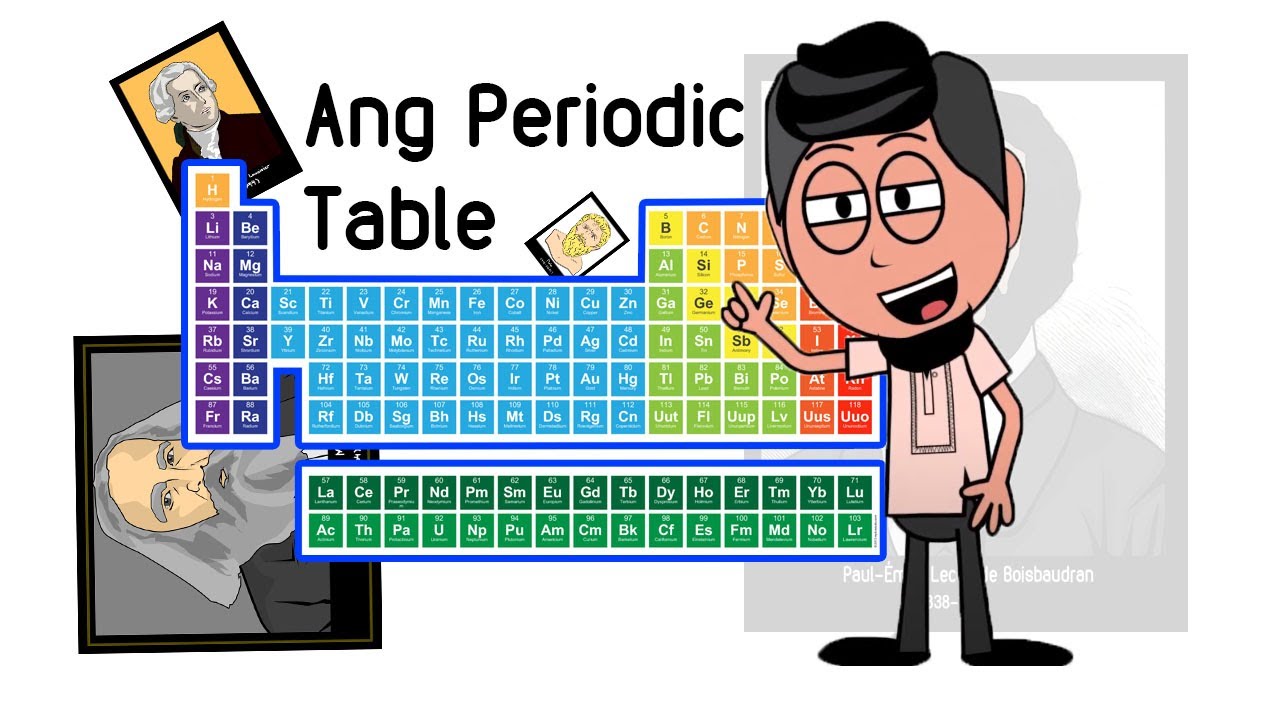Tudo se Transforma Historia da Tabela Periodica
Summary
TLDRThe video script explores the fascinating history of the periodic table and its development in chemistry. It starts by tracing the early efforts to classify elements, from ancient Greek ideas to the groundbreaking work of scientists like Mendeleev. The script delves into the various theories and discoveries that led to the periodic table we use today, highlighting key figures like Mendeleev, Newlands, and Moseley. The video also covers how the periodic table revolutionized chemistry, facilitated medical advancements, and helped in the creation of synthetic elements, showing its enduring impact on science and industry.
Takeaways
- 😀 The classification of chemical elements was one of the great achievements in chemistry, simplifying the understanding of complex knowledge.
- 😀 The ancient Greeks initially believed in four fundamental elements: earth, fire, air, and water, but later discoveries proved there were many more elements.
- 😀 The first chemical element to be isolated was phosphorus, discovered in 1669 by alchemist Hennig Brand, who was trying to find the Philosopher's Stone.
- 😀 Over two centuries, many chemists, including Lavoisier and Berzelius, identified new elements, leading to the need for classification.
- 😀 Johan Wolfgang Döbereiner proposed the law of triads, grouping elements with similar properties in threes based on atomic mass.
- 😀 In 1860, chemists organized a conference that led to a breakthrough in understanding atomic masses, which helped in further classification of elements.
- 😀 John Newlands proposed organizing elements into 'octaves,' similar to the musical scale, which faced ridicule but later earned him recognition.
- 😀 Dmitri Mendeleev is credited with creating the first periodic table, arranging elements by increasing atomic mass and predicting the existence of undiscovered elements.
- 😀 Henry Moseley, in 1913, discovered that the atomic number (not atomic mass) should be used to arrange the elements, solving issues in Mendeleev's table.
- 😀 The periodic table is continuously evolving, with modern advancements like the creation of synthetic elements, and the addition of new elements named after notable scientists.
Q & A
What was the main challenge faced by chemists in organizing chemical elements?
-Chemists struggled with understanding the behavior and properties of elements and finding a systematic way to organize them, as early models like the Greek belief in four fundamental elements did not reflect the complexity of nature.
What was the first significant step in the classification of chemical elements?
-The first significant step was the discovery of phosphorus by the alchemist Henning Brand in 1669, who isolated it from urine, marking the beginning of identifying and isolating chemical elements.
What is the law of triads proposed by Johann Wolfgang Döbereiner?
-Döbereiner's law of triads suggested that elements could be grouped in sets of three, where the atomic mass of the middle element was the average of the first and third elements. However, only a few elements followed this pattern.
What was the significance of the 1860 conference involving August Kekulé, Carl Wöhler, and Stanislao Cannizzaro?
-The 1860 conference played a key role in establishing a unified understanding of atomic masses and the difference between atoms and molecules, setting the stage for further developments in the organization of elements.
What was the contribution of Dmitri Mendeleev to the development of the periodic table?
-Mendeleev is credited with creating the first version of the periodic table, organizing 60 known elements by increasing atomic mass and grouping them by similar chemical properties, leaving gaps for undiscovered elements.
How did Mendeleev predict the discovery of new elements?
-Mendeleev left blank spaces in his periodic table, predicting that new elements would be discovered to fill these gaps. He even described their properties before they were found, and his predictions were confirmed with the discovery of gallium, germanium, and scandium.
What was Henry Moseley's key contribution to the periodic table?
-Henry Moseley discovered that the elements should be arranged by atomic number rather than atomic mass, resolving issues in Mendeleev's periodic table and creating a more accurate system.
What are synthetic elements, and how do they differ from naturally occurring elements?
-Synthetic elements are artificially created in laboratories and do not naturally occur in nature. They are often produced by bombarding elements with particles in a process known as nuclear fusion. There are two types: cisuranic elements (atomic number less than 92) and transuranic elements (atomic number greater than 92).
How does the periodic table help in understanding chemical properties?
-The periodic table groups elements based on their chemical properties and atomic structure, allowing scientists to predict the behavior of elements in chemical reactions and understand trends such as atomic radius, ionization energy, and electronegativity.
What role did the development of the periodic table play in the advancement of chemistry and industry?
-The periodic table's development allowed chemists to synthesize knowledge about chemical elements, leading to advancements in medicine, the development of new materials, and the creation of chemical products that improve everyday life.
Outlines

This section is available to paid users only. Please upgrade to access this part.
Upgrade NowMindmap

This section is available to paid users only. Please upgrade to access this part.
Upgrade NowKeywords

This section is available to paid users only. Please upgrade to access this part.
Upgrade NowHighlights

This section is available to paid users only. Please upgrade to access this part.
Upgrade NowTranscripts

This section is available to paid users only. Please upgrade to access this part.
Upgrade NowBrowse More Related Video

Sejarah Sistem Periodik Unsur - SMP/SMA

Geschiedenis van het Periodiek Systeem

Entenda a TABELA PERIÓDICA em 10 minutos - Toda Matéria

Sistem Periodik Unsur • Part 1: Sejarah SPU & Hubungan SPU dengan Konfigurasi Elektron Bohr

As 100 Maiores Descobertas da Química Dublado-Documentário Completo

Ang Periodic Table: Brief History in Tagalog
5.0 / 5 (0 votes)